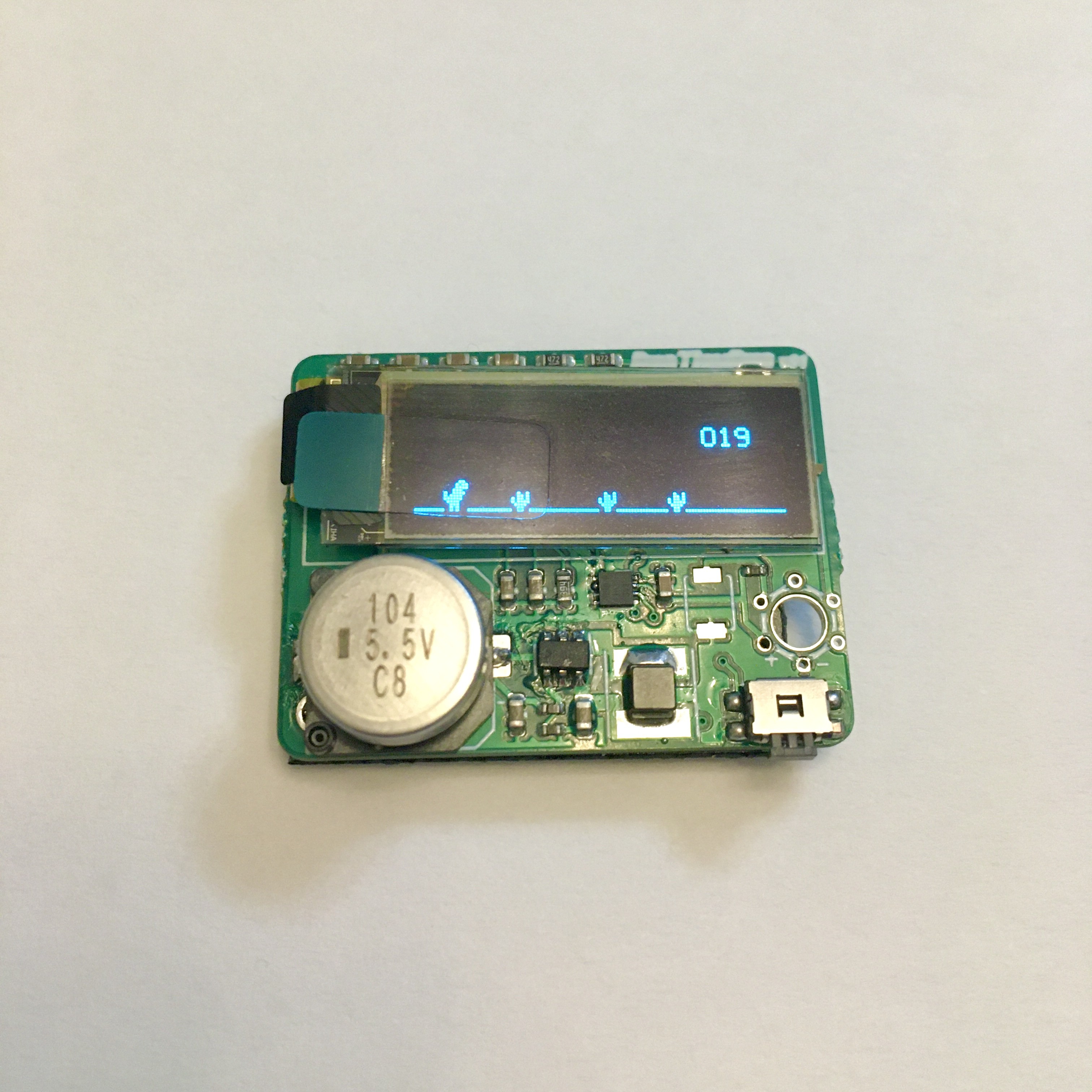
The components are all soldered and the boards are ready.
I first soldered all the smaller components leaving display, supercapacitor and solar panels for later. For these, I used solder paste and a hot surface.
Then I programmed the ATtiny10. This way, if the chip was not correctly soldered I could reflow it without removing other components.
As always happen when I successfully solder DFN packages, I've been surprised to see the program being uploaded correctly.
Next, I soldered the display. This seemed daunting at first but ended up being not really troublesome: just use a little solder and a lot of flux.
Supercapacitor and solar panels followed.
I built four boards out of the 10 ordered and all of them work. In the process, I had to throw away a step-up converter: if you solder it reversed you get some magic smoke...
The only missing part is a reset button but this not strictly necessary. I will add it later.
As expected, the board with the IXOLAR panels takes longer to charge the capacitor.
The one with the larger panel can run an indefinite time when directly exposed to sunlight.
I also found out that a 10uH inductor helps lowering the boost converter start-up voltage.
In future, I'm going to replace the MCP1640 with an IC specific for solar energy harvesting. Another improvement will be replacing the pushbutton with a capacitive pad and dedicated IC
 ridoluc
ridoluc
Discussions
Become a Hackaday.io Member
Create an account to leave a comment. Already have an account? Log In.
Wonderful to see the new boards update - they look so cute! Great to hear it runs continuously with the larger solar panels, too. I hope this might one day make it to Tindie. I think they would make excellent gifts for my kids!
Are you sure? yes | no
Nice! Have you already selected a solar harvesting IC? Seems that AEM10941 is the most efficient for now, but not the cheapest one.
What the reasoning behind replacing the push button? I thought it is quite useful to have tactile feedback in such a device.
Are you sure? yes | no
I think I'll go for the Texas Instruments TPS61201 for the simplicity and low number of external components required. Another option may be the STMicroelectronics SPV1040. Both reasonably priced.
The idea behind the capacitive input is that I can then cover the whole board with epoxy (or similar) . I'd like to leave the pcb in sight with no enclosure but I need some sort of protective coating. In any case you are right about the tactile feedback. I will do some tests. For now it's just an idea and maybe I will get a better one.
Are you sure? yes | no
It makes sense. I suspect that it'll look amazing in a clear resin :)
Are you sure? yes | no